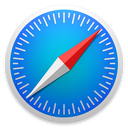FAQ
How do I accurately evaluate colors in UV flexo?
The correct way to evaluate colors is exclusively via our EloDot (press aligned) color proofs. PDFs supplied by Elopak are not color relevant and should only be used to approve the layout of design elements, text, and other content.
What is the correct way to preview a delivered PDF soft proof?
A PDF reader application needs to have overprint preview option switched on, so that all the colors and design elements can be simulated properly. To do so:
a. Open the Adobe Acrobat/Reader application on your computer.
b. Go to the top navigation bar and click on the application name, then select [Preferences > General…]:
c. Under [Categories > Page Display] change “Use Overprint Preview” to “Always” and then click “OK”
Why is the color of certain design elements changed from my original artwork?
Artwork can be delivered using Pantone spot colors. However, in all cases, our pre-press specialists will accurately convert the delivered colors into EloChrome color build-ups. If certain design elements do not conform to specification, Elopak pre-press will adjust and/or optimize to achieve the best consistent production result and closest aesthetic match. All necessary changes will be faithfully reflected on the EloDot proof.
What are the outlines visible in the PDF soft proof and EloDot print proof?
Outlines visible around white or multicolor text as well as on overlapping color objects are trapping. The term trapping relates to instances where two colors meet. The lighter color is slightly expanded into the darker to create an overlap. This yields a darker outline. Trapping or cutback is applied to prevent visible color-to-color register variation and unsightly white lines in printing.
Is trapping going to be present on all artworks?
Yes. Tapping is a mandatory adjustment in UV flexo printing.
Can the trapping outlines be reduced or completely removed?
No. Tapping is a mandatory adjustment in UV flexo printing. Elopak will ensure that the correct process-specific trapping is applied where necessary. Depending on design complexity, trapping or cutback may vary up to 0,25 mm. Designers are not required to make allowances for trapping in the supplied artwork.
How to make sure that my design can be faithfully reproduced in UV flexo?
We recommend involving Elopak pre-press as early as possible in the design process to ensure optimal artwork compliance to destination printing process.
Is there a way to know upfront how accurately an individual PMS color can be matched in UV flexo?
Yes. If you can supply a PMS reference to Elopak pre-press, we can inform you about a particular color match accuracy (deltaE 2000 standard measurements).
What safe zones should be considered on Elopak die lines?
Whenever new artwork is supplied, please make sure to request the appropriate grid/keyline from Elopak personnel. All designs must be delivered on a correct Elopak grid. To facilitate artwork application, the clipping area is tinted gray and only this area should be used for the layout. It is not allowed to alter or modify Elopak grids in any way, as they are size-accurate technical drawings of actual die tools.
Areas of special attention:
- The bottom area marked with a dotted line may be used for article numbers, food-safe logos, or a bottom bar code in a single printing ink. Safe zones need to be strictly adhered to.
- The top fins are reserved for minimum print only (e.g. best before info, opening arrows).
- Side panel gable tops are reserved for technical information and Elopak trademarks and logos.
- If there is a cap closure on the blank, please keep all text and design elements outside the cap safe zone. This area is marked with dotted lines.
- Text safe zones and clear areas on each of the panels.
Can a barcode be produced in colors other than black?
Yes, however only in color combinations that allow for accurate scanning at point of sale. Feel free to contact us for advice on color options.



